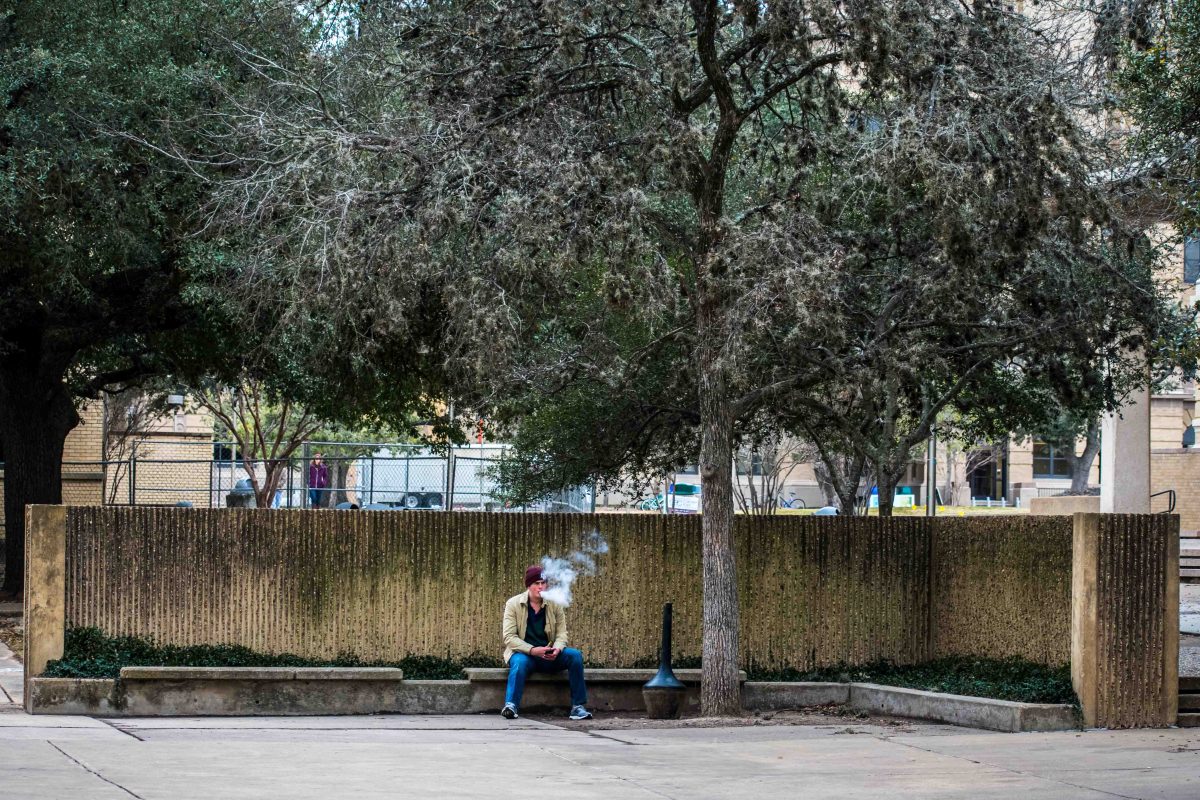In light of the new vaping ban to roll out on Texas A&M campuses, the discussion about e-cigarettes has been brought up once again, especially among current vapers.
The popular alternative to smoking has been a topic of controversy for the past few weeks due to recent reports of vaping-related lung illness — over 800 cases nationwide, according to the Centers for Disease Control and Prevention. President Donald Trump’s administration has made moves to ban the sale of most flavored vapes, citing concerns about the flavors attracting young people.
In response to news about the upcoming ban at A&M, communicationjunior Stephen Huh said he doesn’t condone the government regulating citizens’ private lives.
“I think it goes completely against the premise of this country, being that you can do whatever you want as long as it doesn’t hurt or damage any other citizen of this country,” Huh said. “If Michael Young is saying that he’s thinking about regulating vaping on campus, I would say that I’m sure that it comes from a good place. However, I don’t agree with it because he is the president and presides over what I would consider grown adults.”
In addition to the freedom of personal choice, many people tout vaping as a healthier alternative that can help tobacco addicts quit smoking more carcinogenic cigarettes and other tobacco products.
Three years ago, Huh switched to vaping from using cigarettes and dip, a habit he had sustained throughout his time in the Marines.
“The biggest thing for me was [that] I was coming up on what was my ‘10-year anniversary’ on smoking cigarettes,” Huh said. “That number really sat uncomfortably with me, that I could claim that I had smoked cigarettes or used tobacco for 10 years. At that time, what came up was e-cigs or vapes, so I looked to the alternative, and as far as I knew, that was something that looked pretty good to me.”
However, psychology senior James Radke said he’s worried that the original purpose of vaping has changed since its inception. He said its nicotine content, sweet flavorings and minimalistic design draw more people in — especially teenagers.
“The only issue I see is that some people see it as something to start on rather than a cessation aid for cigarette users,” Radke said. “It used to be people that were wanting to quit cigarettes, but now it seems like every new class comes in with an addiction.”
Despite the new Tobacco 21 law raising the legal age to purchase nicotine products, many students were “grandfathered in” and can still buy vapes and cigarettes as long as they were 18 before Sept. 1.
Nuclear engineering senior Quincy Huhn said while he knows vaping is prevalent among young people, he hasn’t seen it very frequently around campus.
“I think [vaping] is pretty terrible, and the only real benefit to it is a way for people to be able to quit smoking,” Huhn said. “But beyond that, I feel like the way that they’ve made it cool for kids to smoke has been not great at all and very much degraded our society to an extent.”
The medical world is starting to explore the effects of vaping devices, though the long-term health impacts are not fully documented. Huh expressed concern that e-cigarettes’ addictive properties are keeping kids attached to their vapes despite the potential consequences.
“That’s something that has reminded me of my original goal I had when I started vaping — to become independent of nicotine,” Huh said. “I’ve gone to different doctors’ offices where they ask me if I use tobacco products and I was able to proudly proclaim that I haven’t used tobacco products in many years, but the truth is that I’m still addicted to nicotine and that is, in the end, a problem.”
Ban sparks renewed discussion about the rise of e-cigarettes
October 2, 2019
Photo by FILE
Currently, e-cigarettes and other vaping products are included in Texas A&M’s smoking and tobacco policies, and they can be used in some designated areas around campus.
0
Donate to The Battalion
Your donation will support the student journalists of Texas A&M University - College Station. Your contribution will allow us to purchase equipment and cover our annual website hosting costs.









